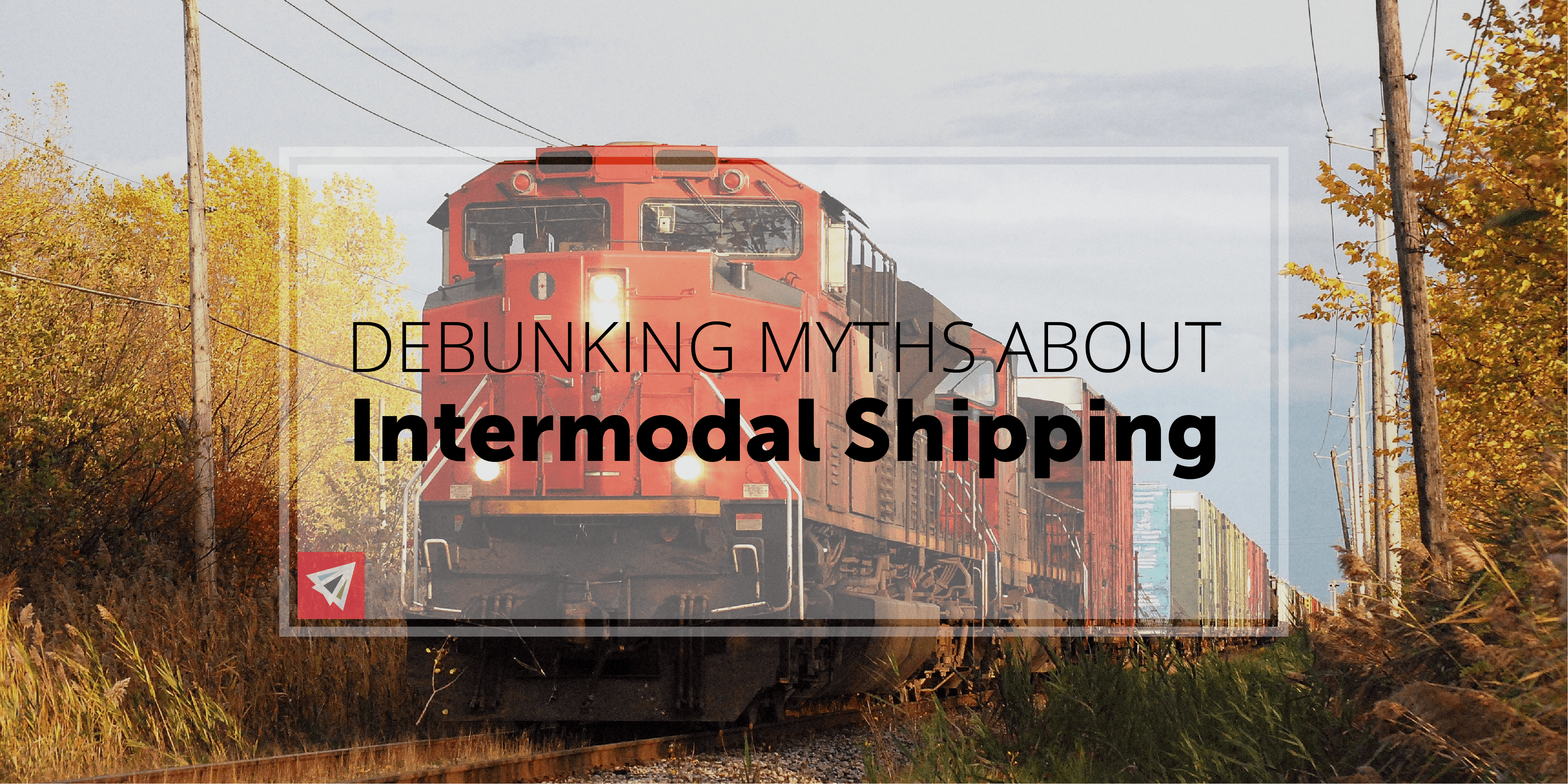Intermodal transportation is easily the fastest growing mode of domestic shipping. Simply put, intermodal transportation is a shipping method that combines trucking and railroad use, whereby truckers pick up and drop off the products on both ends while the long haul is made by rail. Given the combination of different mediums of shipping utilized in intermodal transportation, many have made false presumptions regarding the cost efficiency, timeliness, and damages associated with this method.
Debunking Myths About Intermodal Shipping
Whether or not you have heard of or used intermodal transportation methods in the past, we wanted to take a couple minutes to debunk some common myths made by intermodal skeptics.
Isn’t Intermodal Slower than Trucking Shipments?
We get this one a lot, and we understand where the concern comes from. How can taking a multi-step shipping process be faster than having one guy haul them straight to your buyer’s location by truck? The answer is simple. Rail shipments don’t have nearly as many delays as truck shipments. While a local truck shipment will take an average of 2 days to get to its destination, moving your cargo by intermodal means will allow that same cargo to move approximately 1,000 miles to its buyer in 2-3 days.
Isn’t Intermodal Less Reliable Than Trucking?
With the advancements made to rail lanes, transportation management systems, and equipment in the past 20 years, rail shipping has never seen better days. In case it relaxes your shoulders, you’d be happy to know that intermodal transportation methods are consistently meeting deadlines 95% of the time (and that’s at its lowest.) Some of the most heavily utilized intermodal lanes are hitting upwards of 98-99% on-time deliveries.
Doesn’t Intermodal Transportation Increase the Opportunity for Damage?
Given the common shipping standards for railroad and trucking companies, methods have been implemented to avoid shipping damage in intermodal transportation. If a shipment is properly loaded, goods transported via intermodal shouldn’t experience any more damage than you might find in a truck shipment. Although smaller shipments may have to be loaded more carefully in rail containers, intermodal companies see cases like these every day and know exactly how to handle the cargo.
Won’t Intermodal Transportation Be More of a Headache?
If you have avoided shipping your goods via intermodal methods because you think it may be too complicated, you might want to revisit a few facts. Intermodal shipping immediately removes many of the headaches associated with truck shipments. The responsibilities of organizing your dray, line haul, origin and destination truckers, and tracking your shipment along each step of the way are just a few reasons you may want to try something new. Laboring over all the details of who, when, and where your shipment is handled may quickly make your trucking shipments a pain. However, with the industry quickly changing, many freight forwarders are offering all-inclusive truck/rail/truck services, making intermodal transportation one of the best and easiest options for moving your products.

2 thoughts on “Debunking Myths About Intermodal Shipping”